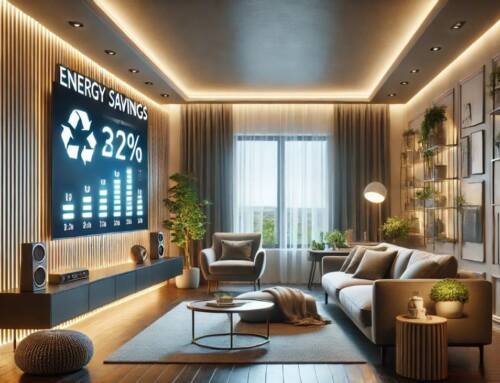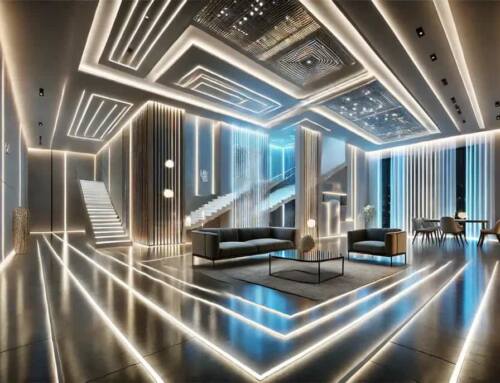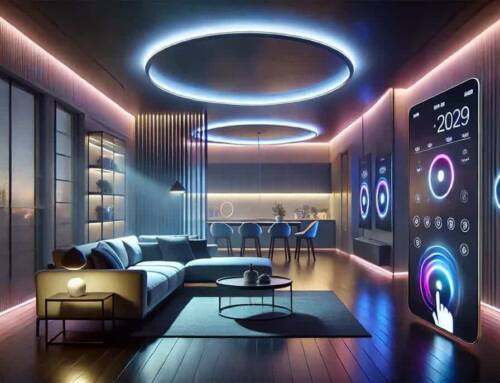Single vs Double Density RGB LED Strips A Detailed Overview
If you wonder what the difference is between single and double density LED strips, you’re not alone. A lot of people still don’t really have a clear idea as to what double density means in the RGB LED Strip market. There’s a misconception that the term “Double Density” has to with the PCB board instead of the LED Strip. Actually the thickness of the board doesn’t change at all, the LEDs per meter double.
There are a few reasons you might want to use double density strips for your application. Let’s review the differences between the strips and then we’ll go over things to consider when choosing which one to use.
Number of LED Diodes per Reel
Both the single and dual density RGB LED Strips are 12V and both come in the same length of 5M (16.4FT) per reel and are equipped with the same high quality components that you would expect from our LED strips.
They are both great products with super bright lights. The Double Density version is going to be much brighter because it has 300 SMD LEDs, as opposed to the single density version only having 150 SMD LEDs per 5M (16.4ft) reels.
This only applies to the 5050 LED Strip versions. The single density strip has 30 LEDs per meter segment and the double density strip has 60 SMD LEDs per meter. This makes the double density strip about twice as bright as the single density LED strip benefiting you where you need it the most.
Power Consumption Comparison
The single density RGB LED Strip consumes 12V DC per 5M (16.4ft) reel. It comes with 150 high quality SMD RGB LEDs and consumes 1.68W per foot. The current draw is 2300mA and the current drop is 4% per meter segment.
The double density LED RGB Strip consumes 12V DC per 5M (16.4ft) spool and it comes with 300 high quality SMD RGB LEDs consuming 2.98W per foot. The current draw for the double density LED Strip is 4080mA and the voltage drop per meter is 7%. This makes the double density LED Strip double the power consumption but it is still very efficient for the amount of brightness output you’re getting.
Different Applications Call for Different Measures
We understand that everyone has their very own idea of where to install LED Strips and what products will fit their needs. Our main goal is to guide you into choosing a product that will suit your very own specific needs best.
Whenever a customer calls us needing assistance on what density of LEDs to choose from, we ask them what their optimal goal is whenever they finish their installation. There are a few key questions we like to ask:
- Is the application decorative or
- Will theapplication be looked at from afar or from close range?
- We also ask how much length of LED Strip they may need because we need to know how many power supplies and how many controllers our customer is going to need.
The most important consideration is whether or not the brightness of the lights is the focal point.
If you want a super bright and very uniform finish in their installation the double density version is best. Just remember that the double density LED Strip will require a signal booster in between each reel that you run linearly because of voltage drop.
Voltage drop is natural in LED Lighting because of the resistance of the LED Strip itself. If you’re running 10M (32.8ft) in one line then you will need to put a controller with a separate power supply, or a booster in between the LED Strip Lights. (learn more here)
If you’re going for an application where brightness isn’t the focal point, then the single density RGB LED Strip will suit your needs just fine.
If you wonder what the difference is between single and double density LED strips, you’re not alone. A lot of people still don’t really have a clear idea as to what double density means in the RGB LED Strip market. There’s a misconception that the term “Double Density” has to with the PCB board instead of the LED Strip. Actually the thickness of the board doesn’t change at all, the LEDs per meter double.
There are a few reasons you might want to use double density strips for your application. Let’s review the differences between the strips and then we’ll go over things to consider when choosing which one to use.
Number of LED Diodes per Reel
Both the single and dual density RGB LED Strips are 12V and both come in the same length of 5M (16.4FT) per reel and are equipped with the same high quality components that you would expect from our LED strips.
They are both great products with super bright lights. The Double Density version is going to be much brighter because it has 300 SMD LEDs, as opposed to the single density version only having 150 SMD LEDs per 5M (16.4ft) reels.
This only applies to the 5050 LED Strip versions. The single density strip has 30 LEDs per meter segment and the double density strip has 60 SMD LEDs per meter. This makes the double density strip about twice as bright as the single density LED strip benefiting you where you need it the most.
Power Consumption Comparison
The single density RGB LED Strip consumes 12V DC per 5M (16.4ft) reel. It comes with 150 high quality SMD RGB LEDs and consumes 1.68W per foot. The current draw is 2300mA and the current drop is 4% per meter segment.
The double density LED RGB Strip consumes 12V DC per 5M (16.4ft) spool and it comes with 300 high quality SMD RGB LEDs consuming 2.98W per foot. The current draw for the double density LED Strip is 4080mA and the voltage drop per meter is 7%. This makes the double density LED Strip double the power consumption but it is still very efficient for the amount of brightness output you’re getting.
Different Applications Call for Different Measures
We understand that everyone has their very own idea of where to install LED Strips and what products will fit their needs. Our main goal is to guide you into choosing a product that will suit your very own specific needs best.
Whenever a customer calls us needing assistance on what density of LEDs to choose from, we ask them what their optimal goal is whenever they finish their installation. There are a few key questions we like to ask:
- Is the application decorative or
- Will theapplication be looked at from afar or from close range?
- We also ask how much length of LED Strip they may need because we need to know how many power supplies and how many controllers our customer is going to need.
The most important consideration is whether or not the brightness of the lights is the focal point.
If you want a super bright and very uniform finish in their installation the double density version is best. Just remember that the double density LED Strip will require a signal booster in between each reel that you run linearly because of voltage drop.
Voltage drop is natural in LED Lighting because of the resistance of the LED Strip itself. If you’re running 10M (32.8ft) in one line then you will need to put a controller with a separate power supply, or a booster in between the LED Strip Lights. (learn more here)
If you’re going for an application where brightness isn’t the focal point, then the single density RGB LED Strip will suit your needs just fine.












Leave A Comment
You must be logged in to post a comment.